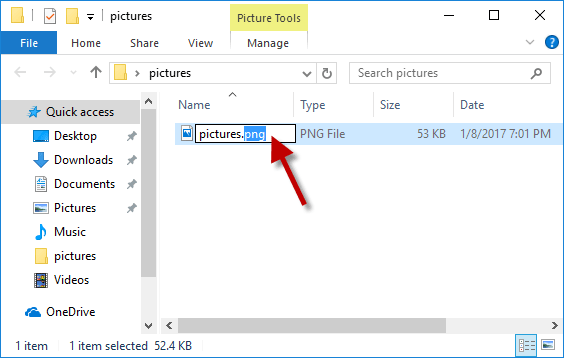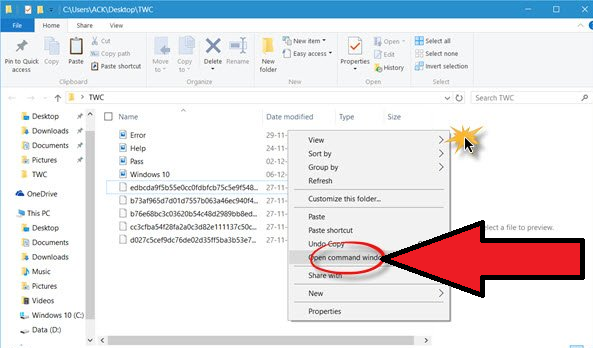How To Change Multiple File Extensions At Once In Windows 10?
You may know that you can use Windows to change the file extension in an individual file. If a file has a .jpg extension and you want to change it to, say, .pdf, you wouldn’t want to open the file and change only its extension; you want to be able to save it with the new extension without having to open it again and edit it. That’s when changing a single file's extension becomes too inconvenient. Fortunately, there is a way to change the extension of multiple files at once!

The purpose of having a file extension is to indicate that a particular file is in a certain format. For document files, you have ‘.txt’ or ‘.doc’; meanwhile, for images, you have ‘.jpg’, ‘.bmp’, or ‘.gif’. Different formats exist because digital manufacturers tend to make their own standards.
If you change the file extension, you will be automatically converting the readability of a file. If a certain file with an extension ‘.txt’, which the application Notepad usually recognizes, is changed into an extension ‘.doc’, this means that the file can now be read automatically by Microsoft Word instead of Notepad.
Changing file extensions are only convenient to a limited extend. For more complicated file formats like music files and video files, the conversion process via renaming extensions is not possible. Just changing the extension of such files can corrupt it and render it unreadable.
The following methods must be applied to the common, simple file types only. To change file extensions, first is you need to reveal them since they are hidden by default.
Reveal The File Extensions
Revealing Using File Explorer Ribbon
- To open File Explorer, press the keys ‘Windows icon’ and the letter ‘e’.
- Select the tab ‘View’,
- On the tab ‘View’, check the ribbon ‘Filename extensions’ to unhide the file extensions. To hide, uncheck the said ribbon.
Revealing Using The File Explorer Option
- Click on ‘Start’ and search for ‘Control Panel’.
- Select ‘Appearance and Personalization’ and then, choose ‘File Explorer Options’.
- Click the tab ‘View’, and then, select the option ‘Hide extensions for known file types’ under the ‘Advanced settings’. To reveal the file extensions, uncheck the option. To hide the file extensions, check the option again.
- After selecting to reveal the extensions, click on ‘Apply’ and then, click on ‘OK’.
Changing The File Extensions
Changing A Single File Extension
- Assuming that the option to reveal the file extension is enabled, you can proceed to make the changes you want.
- Click any file that you want to have the file extension changed and press the key ‘F2’ on your keyboard to make both the filename and file extension editable.
- Highlight the file extension and type in another extension. Press the ‘Enter’ key to confirm the changes.

- If prompted with a dialog box and a warning ‘If you change a file name extension, the file might become unusable’, granted the file extension is valid, click on ‘Yes’ for confirmation.
Changing File Extension Of All Files Under A Single Folder
- You can also change the extension of multiple files in a folder; even with all of them having different names or extensions. On the empty part of the folder, press the ‘Shift’ key while right-clicking.
- From the menu, select the ‘Open command prompt’.

- A command prompt window will appear. Make sure the folder address on the command prompt matches with that of the File Explorer window.
- As an example, the files in the folder are all images with different file extensions and you want a uniform format. You just need to type on the prompt ren *.* *.jpg, press the ‘Enter’ key and all files on that folder will have an extension ‘.jpg’.

Summary: change multiple file extensions at once in Windows 10
- Open File Explorer and click on the View menu.
- Click on Options and then Change folder and search options.
- Switch over to the View tab in the Folder Options dialog box.
- Scroll down to the Hide extensions for known file types setting and uncheck it.
- Click on Apply followed by OK to save the changes you've made.
- Back in File Explorer, type *.txt in the search bar at the top, then hit Enter.
- In the search results, select all text files from which you want to remove .txt extension by holding down Ctrl, then right-click on a file and select Rename.
- Type .original in the filename text box that appears and hit Enter key once to apply your changes.
Conclusion
Changing a file extension can be a risky task. If you are not familiar with the file extension or format, it is better to not change it at all. The aforementioned methods can only work if you want to change typical files like documents and pictures. Additionally, be careful of changing the file extension of an old format into a newer one, especially on document files for it can cause errors in the content.